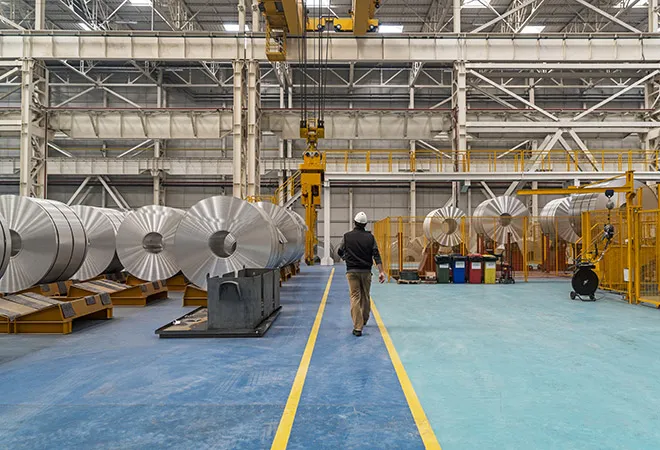
Ever since the Commodity Transaction Tax (CTT) was introduced on commodity derivatives trading from 1 July 2013, commexes and its ecosystem have been vocal about the negative impact of the tax on commodity trade volumes and market quality. However, the government’s position on the levy of the CTT of 0.01 percent on the sale of non-agricultural commodities in the futures market seems to be based on three rationales: arresting excessive speculation, creating a revenue stream, and treating the commodity derivatives market at par with the securities market on the ground that the former has matured after almost a decade of operations in 2013.
Appeals for removal of the CTT from the commodity derivatives sector have been audible before almost every budget. Even prior to the Union Budget proposal of 2020-21, market participants made the same appeal to the Finance Minister. Unfortunately, not only did it go unheeded, things went further south for the commexes in the Finance Bill 2020. The CTT was further extended to the sale of index futures and options in goods (where the underlying is the actual commodity), effective from 1 April 2020. Given this backdrop, this article reflects on the CTT debate on the basis of the results of a research project conducted by the authors on the impacts of CTT on the commodity derivatives markets, which will soon be published as an ORF research paper.
Appeals for removal of the CTT from the commodity derivatives sector have been audible before almost every budget.
At the very outset, it needs to be noted that commodity derivatives markets were allowed to function in India after a ban of almost four decades to perform two very critical functions: price risk management or hedging, and price discovery. Keeping these two functions in mind, the questions that were sought to be answered in this research are the following:
i. Has CTT affected volume and volatility of the markets?
ii. Has CTT affected the hedging and the price discovery functions of the markets?
To respond to these questions, open access daily trading data (volume, prices, etc.) from January 2006 to December 2019 of the Multi Commodity Exchange of India (which dominates the non-agricultural domain of commodity derivatives) for five non-agricultural commodities were studied: aluminium, copper, crude oil, gold and silver.
It is found that there has been a decline in annual and average daily turnover in the entire non-agricultural segment that was subjected to CTT. Table 1 shows the decline in average daily turnover for aluminium, copper, gold and silver in 2012 (pre-CTT era) and 2019 (post-CTT era, but prior to pandemic). Apparently, though there seems to be an increase in turnover in crude oil, the increase is illusionary and is afflicted by presence of price effects or statistically what is known as “non-stationarity.” There are statistical ways of dealing with this problem by removing the “bias” by making the “price” variable stationary or taking turnover at constant prices. Once the price bias is removed through treatment of “non-stationarity” in price data, we found that the turnover value has declined for all the commodities, and the decline is statistically significant.
Table 1: Change in average daily turnover (2012 and 2019)
| Commodity |
Aluminium |
Copper |
Crude Oil |
Gold |
Silver |
| Average daily turnover in 2012 (crore INR) |
649.5 |
5146.9 |
9446.5 |
12192.5 |
14056.2 |
| Average daily turnover in 2019 (crore INR) |
442.9 |
1912.7 |
9621.9 |
6099.7 |
3714.9 |
| % change in daily turnover in current prices |
-31.81 |
-62.84 |
1.86 |
-49.97 |
-73.57 |
| Turnover change after removing “non-stationarity” in prices |
Declined in 2019 |
Declined in 2019 |
Declined in 2019 (though at current prices it is increasing) |
Declined in 2019 |
Declined in 2019 |
The very next question that we asked was whether liquidity has changed with the introduction of CTT. As such, liquidity is an important indicator of the efficiency of the market, as a liquid market is generally associated with a low transaction cost of trading. In a liquid market, participants (hedgers, speculators, day-traders, scalpers, jobbers, etc.) find it easy to enter and exit. In order to understand the impact of CTT on liquidity of the markets for the five commodities under consideration, we used the Hui-Heubel ratio. The ratio is essentially the reciprocal of liquidity, and, therefore, a higher value of the ratio indicates an illiquid market. A higher Hui-Heubel liquidity ratio rather indicates that large price changes are accompanied with small changes in volume, open positions and turnover. In our analysis, by using a dummy variable regression equation with the dummy reflecting on the CTT effect, we found that the Hui-Heubel ratio has increased after introduction of CTT except for gold where there was no sinificant change. This implied that for four of the five commodities, the liquidity dried out due to the rise in cost of transaction because of CTT. Interestingly, we also estimated price volatility, and while testing for the impact of CTT on volatility, it was found that generally volatility has increased for all the commodities though the evidences for the same seem weak for silver.
It is expected that an efficient futures market should reflect on the future of the physical markets.
Now comes the critical question: the concern of risk management or hedging effectiveness. This is a fundamental concern at the micro-level for genuine hedgers in the market. In order to investigate how the CTT has impacted the hedging effectiveness of the futures market of the chosen commodities, we used the Ederington formula and estimated the same through an econometric analysis. Crude oil, gold and silver have recorded a decrease in hedging efficiency as a consequence of the CTT, as can be made out from Table 2.
Table 2: Estimates of Hedging Effectiveness in pre-CTT and post-CTT phases
| Estimate |
Aluminium |
Copper |
Crude Oil |
Gold |
Silver |
| Pre – CTT phase Hedging effectiveness |
0.6272 |
0.1843 |
0.696 |
0.7503 |
0.743 |
| Post – CTT phase Hedging Effectiveness |
0.6967 |
0.5711 |
0.6228 |
0.7237 |
0.6977 |
| Inference from a statistical significance perspective (Chow test p-value at 1% level) |
Change is not statistically significant |
Increased over time |
Declined after CTT |
Declined after CTT |
Declined after CTT |
In order to test how CTT has affected the macro-level function of price discovery, we used the Garbade-Silber econometric framework. As such, price discovery is the phenomenon where a market, through incorporation of various forms of information from the physical markets and the commodity economy as a whole, helps in creating reference prices for other markets. This helps primary producers, market intermediaries, and corporates etc. in their critical extraction, storage and marketing decisions. Hence, it is expected that an efficient futures market should reflect on the future of the physical markets. Our econometric framework revealed that the price discovery function declined for copper, gold and silver due to CTT imposition, though the same is not true for crude and aluminium.
How to go about this now?
To infer, there is no doubt that the CTT has increased the overall cost of hedging. This rise in cost of transaction whether for hedgers or other market participants is definitely a retrograde step not only for the commodity exchanges, but for the commodity economy of the nation as a whole. The declines in turnover and liquidity due to CTT, have consequently affected the hedging efficiency and price discovery functions of critical products like gold, silver, and copper. Of these, silver and copper have high utility as industrial inputs. The penchant for gold in India for household purposes and as storage of value is well-known. The concern is less with crude oil and aluminium. As far as crude oil is concerned, the variety traded in the futures exchange is hardly imported to India, and aluminium has a very low volume to have any substantial effect on physical market trading. Rather, the utility of continuing with futures trading in crude and natural gas needs to be reviewed.
However, the importance of a risk management platform like derivatives trading arises from two factors:
i. Creation of manufacturing hub as articulated in PM’s Make in India and Self-reliant India visions; and
ii. India cannot, for long, stay away from the forces of globalisation despite its temporary withdrawal from RCEP.
India, therefore, needs world-class derivatives exchanges, which will provide for the best risk management practices. It has often been stated that the overall “transaction costs” of doing businesses in India is already very high due to unimplemented labour market reforms, issues with direct taxes and GST compliances, lack of rationalisations of supply-chains, etc.; the CTT has further increased that cost in the form of cost of hedging whose impacts are going to be felt in the entire commodity value-chain within the economy! While a price discovery function played by an efficient commodity derivatives market would have led to market integration, the CTT’s role in impeding such a function is essentially causing harm to the value chain. Therefore, there is enough cause to repeal it, as the revenue generated from it is way less than the cost that the market participants and value-chain stakeholders have to bear!
The views expressed above belong to the author(s). ORF research and analyses now available on Telegram! Click here to access our curated content — blogs, longforms and interviews.




 PREV
PREV



